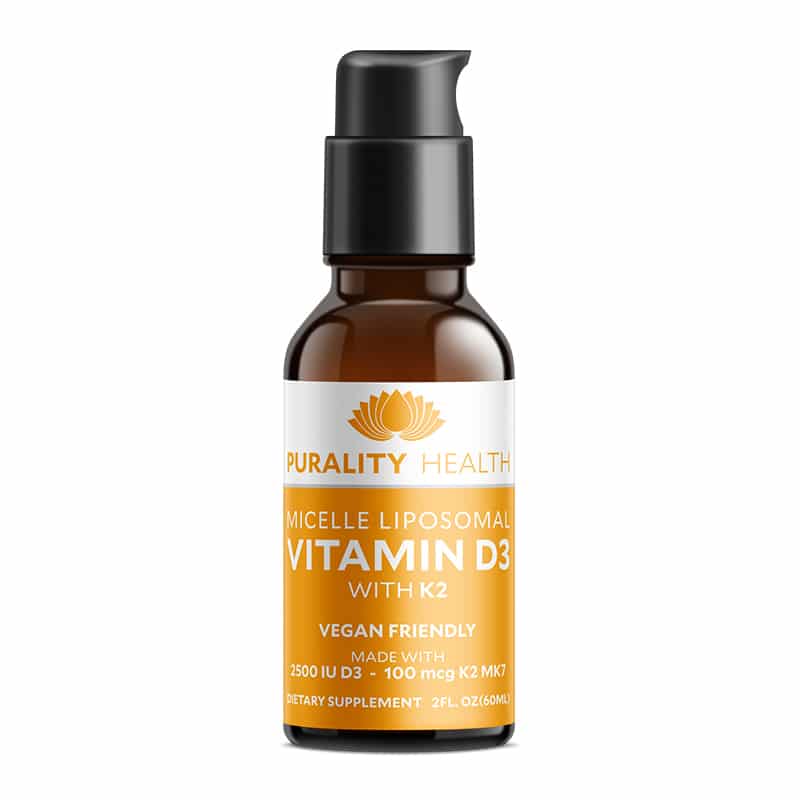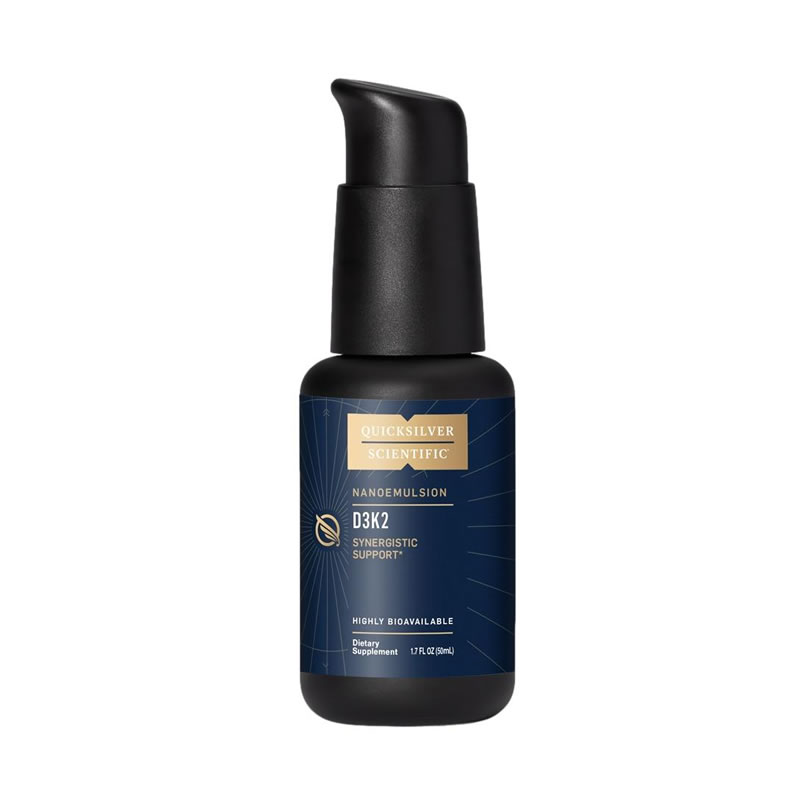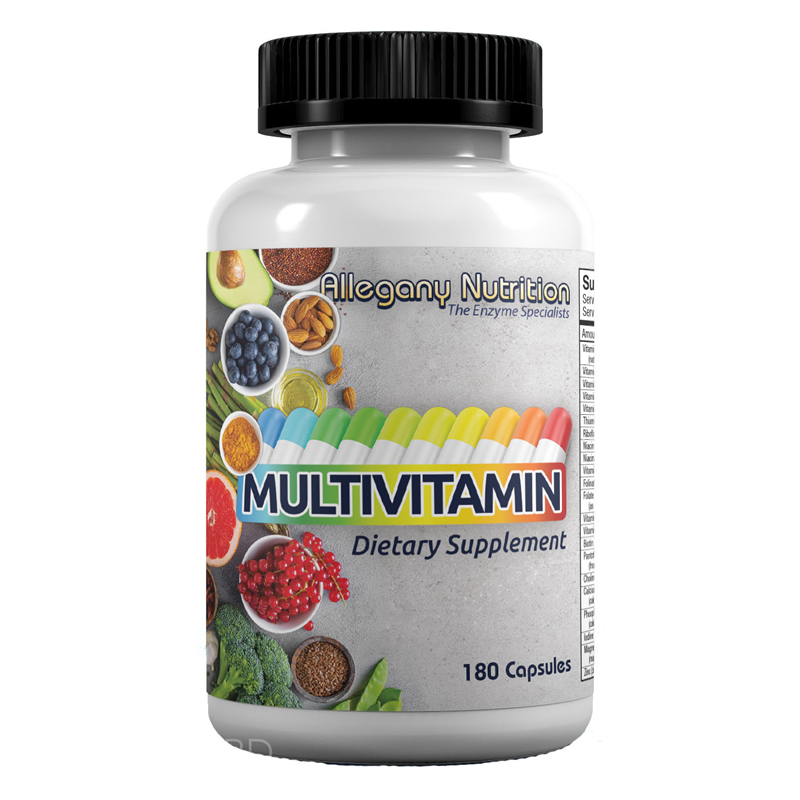No products in the cart.
Vitamin D to End Illness
“The End of Illness” Needs a Dose of Vitamin D
Written by William B. Grant, Ph.D., Sunlight, Nutrition and Health Research Center, San Francisco, for Orthomolecular Medicine News Service
The book, The End of Illness by David B. Agus, M.D. (Free Press, NY, 2011) may have some good points regarding lifestyle choices, but misses the mark regarding vitamin D by a wide margin. Vitamin D is a natural compound that humans have required forever. Thus, much of what we know about the roles of vitamin D come from ecological (geographical) and observational studies for diseases such as cancer,[1-4] cardiovascular disease,[5,6] and diabetes,[5] as well as all-cause mortality rates.[7] The benefits of vitamin D are well known as shown in reviews.[8,9] Since Dr. Agus is a medical doctor, he has come to expect randomized controlled trials (RCTs) to be conducted to determine the beneficial and adverse effects of pharmaceutical drugs, which are artificial compounds to which the human body is not accustomed..
He used the same expectations for vitamin D in Chapter 6, Proceed with Caution. Instead of looking for successful RCTs, he highlighted two failed RCTs, one regarding pain associated with osteoarthritis, one with a very high annual dose for falls and fractures,[10] and an observational study of serum 25-hydroxyvitamin D [25(OH)D] and prostate cancer incidence.[11] There are a number of RCTs that have provided good evidence that vitamin D reduces the risk of cancer,[12,13] hip fractures,[14] type A influenza,[15] pneumonia,[16] increased survival after diagnosis of cardiovascular disease,[17] and reduced all-cause mortality rate.[18] A recent RCT found that pregnant and nursing women need at least 4000 IU/d and that there are no adverse effects.[19]
Thus, Dr. Agus cherry picked papers to support his argument rather than doing a comprehensive review of RCTs of vitamin D supplementation. Nonetheless, not all RCTs have been successful. The reasons why there are not more successful RCTs with vitamin D reported are several: most early studies used only 400 IU/d vitamin D, which is too little for most health outcomes, the beneficial effects of vitamin D for many types of disease have been identified in the past few years, there are many sources of vitamin D such as food, supplements and solar UVB, and there is considerable person-to-person variability in serum 25(OH) D with respect to oral vitamin D intake. Dr. Agus overlooks another way to evaluate whether something such as vitamin D can be considered causal in relation to disease outcome.
The esteemed President of the British Medical Society, A. Bradford Hill, explained the criteria for causality in a biological system in his Presidential Address in 1965.[20] These criteria are: strength of association, consistency, specificity, temporality, biological gradient, plausibility (mechanisms), coherence, experiment (RCTs), and analogy. Later, ruling out confounding factors and bias were added.[21] Not all criteria need be satisfied, and some, such as specificity, do not apply to vitamin D, but the more that are, the better. Hill’s criteria have found good support for many types of cancer,[22] periodontal disease,[23] and multiple sclerosis.[24] Dr. Agus dismisses the benefit of vitamin D for reducing the risk of cancer based in part on a 2008 International Agency for Research on Cancer (IARC) report.[25]
The authors of that report were primarily dermatologists who consider their mission to keep people out of the sun in order to prevent melanoma and skin cancer. This report has been shown to be highly biased.[26] Dr. Agus also suggests that cancer rates are higher at high latitudes due perhaps to genomic effects. This idea can be shown to be incorrect based on a comparison of cancer rates in Nordic countries based on occupation: those with outdoor occupations have reduced risk of at least 13 types of cancer compared to those with indoor occupations.[27] The measure of UV exposure was the standardized incidence rates for lip cancer less lung cancer for males, which is unlikely to be affected by physical activity. As for the basic recommendations listed on the dust jacket, aspirin, statins, and annual flu shot, they have some problems.
A meta-analysis found that aspirin reduced mortality rates for those being treated for various diseases by about 18% but found no benefit for those generally healthy.[28] Another meta-analysis of over 100,000 participants in RCTs found benefits for all-cause mortality rate (6% reduction), but increased risk of hemorrhagic stroke, major bleeding, and GI tract bleeding.[29] About 1.3% of those taking low-dose aspirin for ten years suffer GI tract bleeding,[30] and about 20% of those taking aspirin or other NSAIDs who develop upper GI tract bleeding die.[31] Thus, risk of adverse effects of aspirin use by those who are healthy outweigh the benefits. The use of statins for the general population has a better prognosis. One review found that statin used reduced all-cause mortality rates by 10-17%.[32]
However, one of the important effects of statins is to enhance the effects of vitamin D,[33-35] so why not just take vitamin D? As for flu shots, the evidence that they are effective is limited. One review of ten RCTs found an efficacy of 59% for adults aged 18-65 years.[36] Another review stated “”there is strikingly limited good-quality evidence (all GRADE B, C or not existing) of the effectiveness of influenza vaccination on complications such as pneumonia, hospitalization and influenza-specific and overall mortality.””[37] However, a review in 2004 found that “”vaccine efficacy were 22% (95% CI = 16-28) for preventing clinically diagnosed cases of influenza and 63% (95% CI = 53-71) for preventing laboratory confirmed cases of influenza.””.[38] One problem with report of influenza vaccine effectiveness is selection bias.[39]
Who is going to fund and publish a study showing that influenza vaccination is not effective? On the other hand, an RCT on school children in Japan showed that 1200 IU/d vitamin D3 reduced the risk of type A influenza by about 64%.[40] An RCT in Kabul showed vitamin D reduced the risk of pneumonia among children.[41] An ecological study found that solar UVB doses explained half of the case-fatality rates during the 1918-19 pandemic influenza in the United States, largely due to pneumonia.[42] Thus, flu shots and vitamin D appear to have similar beneficial effects for type A influenza including the H1N1 influenza that struck in 1918-19 and 2009. Dr. Agus calls oral intake of vitamin D unnatural. However, it is oral intake of vitamin D from fish that permitted people to live in the Arctic for millennia,[43,44]
where there is a five-month vitamin D winter.[45] Unlike aspirin, there are no adverse effects of vitamin D unless one takes more than 20,000 IU/d for an extended period, in which case hypercalcemia may develop. Vitamin D researchers have recommended serum 25(OH)D concentrations of 30-40 ng/ml (75-100 nmol/l).[9] This value is much higher than the 20 ng/ml (50 nmol/l) and 600 IU/d recommended by the Institute of Medicine (IOM).[46] Unfortunately, the IOM committee relied only on RCTs and not the wealth of information about the health benefits of vitamin D from ecological, observational and laboratory studies.[47]
In addition, the IOM committee elected not to include RCTs showing benefits if the findings disagreed with their goal to set the recommendation at 600 IU/d vitamin D and 20 ng/ml such as the one by Hollis and colleagues,[19] leading to much higher recommendations for pregnant and nursing women.[48] The Endocrine Society subsequently recommended 30 ng/ml and 1500-2000 IU/d vitamin D3.[49] Dr. Agus also recommends physical activity, pointing to studies of risk of death from coronary heart disease by occupation; those in occupations with heavy work involved had about half the mortality rate of those with light work in a paper from 1953.[50] As already discussed, workers in occupations with much of the work done outdoors in Nordic countries have lower cancer incidence rates.
Thus, physical activity conducted outdoors entails production of vitamin D. Here is one final word on the importance of vitamin D. It is the trade-off between protection against UV damage and vitamin D production is the reason why skin pigmentation varies from very dark in the tropical plains and very pale in northern Europe.[43,44] Our modern lifestyle does not permit most people to obtain sufficient vitamin D from the sun, even though 90% of our vitamin D comes from the sun.[51] Thus, supplements are an effective way to obtain sufficient vitamin D for optimal health.[52,53] The reason the medical system does not like vitamin D is that it is both very inexpensive and very effective at reducing risk of many types of disease, which lowers income and profit.
References
The abstracts of nearly all references are available through http://www.ncbi.nlm.nih.gov/pubmed/ (search authors’ names, part of title). Links to free full text papers are provided below.
- Garland CF, Gorham ED, Mohr SB, Garland FC. Vitamin D for cancer prevention: Global perspective. Ann Epi. 2009;19(7):468-83.
- Grant WB. Relation between prediagnostic serum 25-hydroxyvitamin D level and incidence of breast, colorectal, and other cancers. J Photochem Photobiol B, 2010;101(2):130-6.
- Gandini S, Boniol M, Haukka J, et al. Meta-analysis of observational studies of serum 25-hydroxyvitamin D levels and colorectal, breast and prostate cancer and colorectal adenoma. Int J Cancer. 2011;128(6):1414-24.
- Grant WB. Ecological studies of the UVB-vitamin D-cancer hypothesis; review. Anticancer Res. 2012;32(1)223-36.
- Parker J, Hashmi O, Dutton D, et al. Levels of vitamin D and cardiometabolic disorders: systematic review and meta-analysis. Maturitas. 2010;65(3):225-36.
- Anderson JL, May HT, Horne BD, et al. Relation of vitamin D deficiency to cardiovascular risk factors, disease status, and incident events in a general healthcare population. Am J Cardiol. 2010;106(7):963-8.
- Zittermann A, Iodice S, Pilz S, et al. Vitamin D deficiency and mortality risk in the general population: A meta-analysis of prospective cohort studies. Am J Clin Nutr. 2012;95(1): 91-100.
- Holick MF. Vitamin D deficiency. N Engl J Med. 2007;357(3):266-81.
- Souberbielle JC, Body JJ, Lappe JM, et al. Vitamin D and musculoskeletal health, cardiovascular disease, autoimmunity and cancer: Recommendations for clinical practice. Autoimmun Rev 2010;9:709-15.
- Sanders KM, Stuart AL, Williamson EJ, et al. Annual high-dose oral vitamin D and falls and fractures in older women: a randomized controlled trial. JAMA. 2010;303(18):1815-22.
- Ahn J, Peters U, Albanes D, et al. Serum vitamin D concentration and prostate cancer risk: A nested case-control study. J Natl Cancer Inst. 2008;11:796-804. The full text article is available for free download at http://jnci.oxfordjournals.org/content/100/11/796.full.pdf+html
- Lappe JM, Travers-Gustafson D, Davies KM, et al. Vitamin D and calcium supplementation reduces cancer risk: results of a randomized trial. Am J Clin Nutr. 2007;85(6):1586-91. The full text article is available for free download at http://www.ajcn.org/content/85/6/1586.full.pdf+html
- Bolland MJ, Grey A, Gamble GD, Reid IR. Calcium and vitamin D supplements and health outcomes: a reanalysis of the Women’s Health Initiative (WHI) limited-access data set. Am J Clin Nutr. 2011;94(4):1144-9.
- Bischoff-Ferrari HA, Willett WC, Wong JB, et al. Prevention of nonvertebral fractures with oral vitamin D and dose dependency: a meta-analysis of randomized controlled trials. Arch Intern Med. 2009;169(6):551-61. The full text article is available for free download at http://archinte.ama-assn.org/cgi/reprint/169/6/551
- Urashima M, Segawa T, Okazaki M, et al. Randomized trial of vitamin D supplementation to prevent seasonal influenza A in schoolchildren. Am J Clin Nutr. 2010;91(5):1255-60. The full text article is available for free download at http://www.ajcn.org/content/91/5/1255.full.pdf+html
- Manaseki-Holland S, Qader G, Isaq Masher M, et al. Effects of vitamin D supplementation to children diagnosed with pneumonia in Kabul: a randomised controlled trial. Trop Med Int Health. 2010;15(10):1148-55.
- Vacek JL, Vanga SR, Good M, et al. Vitamin D Deficiency and Supplementation and Relation to Cardiovascular Health. Am J Cardiol. 2012;109(3):359-63.
- Autier P, Gandini S. Vitamin D supplementation and total mortality: a meta-analysis of randomized controlled trials. Arch Intern Med. 2007;167(16):1730-7.
- Hollis BW, Johnson D, Hulsey TC, et al. Vitamin D supplementation during pregnancy: double-blind, randomized clinical trial of safety and effectiveness. J Bone Miner Res. 2011;26(10):2341-57.
- Hill AB. The environment and disease: Association or causation? Proc R Soc Med. 1965;58:295-300.
- Potischman N, Weed DL. Causal criteria in nutritional epidemiology. Am J Clin Nutr. 1999;69(6):1309S-1314S. The full text article is available for free download at http://www.ajcn.org/content/69/6/1309S.full.pdf+html
- Grant WB. How strong is the evidence that solar ultraviolet B and vitamin D reduce the risk of cancer? An examination using Hill’s criteria for causality. Dermato-Endocrinology. 2009;1(1):17-24. The full text article is available for free download at http://www.landesbioscience.com/journals/dermatoendocrinology/006-Grant2DE1-1.pdf
- Grant WB, Boucher BJ. Are Hill’s criteria for causality satisfied for vitamin D and periodontal disease? Dermato-Endocrinology. 2010;2(1):30-36. The full text article is available for free download at http://www.ncbi.nlm.nih.gov/pmc/articles/PMC3084963/pdf/de0201_0030.pdf
- Hanwell HE, Banwell B. Assessment of evidence for a protective role of vitamin D in multiple sclerosis. Biochim Biophys Acta. 2011;1812(2):202-12.
- IARC Working Group Report 5: Vitamin D and Cancer, Lyon, France (Nov. 25, 2008) The full text article is available for free download at http://www.iarc.fr/en/publications/pdfs-online/wrk/wrk5/index.php
- Grant WB. A critical review of Vitamin D and Cancer: A report of the IARC Working Group on vitamin D. Dermato-Endocrinology. 2009;1(1):25-33. The full text article is available for free download at http://www.landesbioscience.com/journals/dermatoendocrinology/007-Grant3DE1-1.pdf
- Pukkala E, Martinsen JI, Lynge E, et al. Occupation and cancer – follow-up of 15 million people in five Nordic countries. Acta Oncol. 2009;48:646-790.
- Simpson SH, Gamble JM, Mereu L, Chambers T. Effect of aspirin dose on mortality and cardiovascular events in people with diabetes: a meta-analysis. J Gen Intern Med. 2011;26(11):1336-44.
- Raju N, Sobieraj-Teague M, Hirsh J, et al. Effect of aspirin on mortality in the primary prevention of cardiovascular disease. Am J Med. 2011;124(7):621-9.
- McQuaid KR, Laine L. Systematic review and meta-analysis of adverse events of low-dose aspirin and clopidogrel in randomized controlled trials. Am J Med. 2006;119(8):624-38.
- Straube S, Tramr MR, Moore RA, et al. Mortality with upper gastrointestinal bleeding and perforation: effects of time and NSAID use. BMC Gastroenterol. 2009;9:41.
- Tonelli M, Lloyd A, Clement F, et al. Efficacy of statins for primary prevention in people at low cardiovascular risk: a meta-analysis. CMAJ. 2011;183(16):E1189-202.
- Bhattacharyya S, Bhattacharyya K, Maitra A. Possible mechanisms of interaction between statins and vitamin D. QJM. 2012 Feb 9. [Epub ahead of print]
- Sathyapalan T, Shepherd J, Arnett C, et al. Atorvastatin increases 25-hydroxy vitamin D concentrations in patients with polycystic ovary syndrome. Clin Chem. 2010;56(11):1696-700.
- Yavuz B, Ertugrul DT, Cil H, et al. Increased levels of 25 hydroxyvitamin D and 1,25-dihydroxyvitamin D after rosuvastatin treatment: a novel pleiotropic effect of statins? Cardiovasc Drugs Ther. 2009;23(4):295-9.
- Osterholm MT, Kelley NS, Sommer A, Belongia EA. Efficacy and effectiveness of influenza vaccines: a systematic review and meta-analysis. Lancet Infect Dis. 2012;12(1):36-44.
- Michiels B, Govaerts F, Remmen R, et al. A systematic review of the evidence on the effectiveness and risks of inactivated influenza vaccines in different target groups. Vaccine. 2011;29(49):9159-70.
- Villari P, Manzoli L, Boccia A. Methodological quality of studies and patient age as major sources of variation in efficacy estimates of influenza vaccination in healthy adults: a meta-analysis. Vaccine. 2004; 22(25-26):3475-86.
- Baxter R, Lee J, Fireman B. Evidence of bias in studies of influenza vaccine effectiveness in elderly patients. J Infect Dis. 2010;201(2):186-9.
- Urashima M, Segawa T, Okazaki M, et al. Randomized trial of vitamin D supplementation to prevent seasonal influenza A in schoolchildren. Am J Clin Nutr. 2010; 91(5):1255-60. The full text article is available for free download at http://www.ajcn.org/content/91/5/1255.full.pdf+html
- Manaseki-Holland S, Qader G, Isaq Masher M, et al. Effects of vitamin D supplementation to children diagnosed with pneumonia in Kabul: a randomized controlled trial. Trop Med Int Health. 2010;15(10):1148-55.
- Grant WB, Giovannucci E. The possible roles of solar ultraviolet-B radiation and vitamin D in reducing case-fatality rates from the 1918-1919 influenza pandemic in the United States. Dermato-Endocrinology 2009;1(4):215-9. The full text article is available for free download at http://www.landesbioscience.com/journals/dermatoendocrinology/Grant1DE1-4.pdf
- Jablonski NG, Chaplin G. The evolution of human skin coloration. J Hum Evol. 2000;39(1):57-106. The full text article is available for free download athttp://www.pnas.org/content/107/suppl.2/8962.full.pdf+html
- Jablonski NG, Chaplin G. Colloquium paper: human skin pigmentation as an adaptation to UV radiation. Proc Natl Acad Sci U S A. 2010; 107 Suppl 2:8962-8.
- Webb AR, Engelsen O. Calculated ultraviolet exposure levels for a healthy vitamin D status. Photochem Photobiol. 2006; 82(6):1697-703.
- Ross AC, Manson JE, Abrams SA, et al. The 2011 report on dietary reference intakes for calcium and vitamin D from the Institute of Medicine: what clinicians need to know. J Clin Endocrinol Metab. 2011;96(1):53-8. The full text article is available for free download at http://jcem.endojournals.org/content/96/1/53.full.pdf+html
- Holick MF. The D-batable institute of medicine report: a D-lightful perspective. Endocr Pract. 2011;17(1):143-9.
- Hollis BW, Wagner CL. Vitamin D requirements and supplementation during pregnancy. Curr Opin Endocrinol Diabetes Obes. 2011;18(6):371-5.
- Holick MF, Binkley NC, Bischoff-Ferrari HA, et al. Evaluation, treatment, and prevention of vitamin D deficiency: an Endocrine Society Clinical Practice Guideline. J Clin Endocrinol Metab, 2011;96(7):1911-30.
- Morris JN, Heady JA, Raffle PA, et al. Coronary heart disease and physical activity of work. Lancet 1953;2:1053-7.
- Holick MF. Vitamin D and sunlight: strategies for cancer prevention and other health benefits. Clin J Am Soc Nephrol. 2008;3(5):1548-54.
- Grant WB. In defense of the sun: An estimate of changes in mortality rates in the United States if mean serum 25-hydroxyvitamin D levels were raised to 45 ng/mL by solar ultraviolet-B irradiance. Dermato-Endocrinology, 2009;1(4):207-14. The full text article is available for free download at http://www.landesbioscience.com/journals/dermatoendocrinology/Grant3DE1-4.pdf
- Grant WB. An estimate of the global reduction in mortality rates through doubling vitamin D levels. Eur J Clin Nutr. 2011;65:1016-26.
Nutritional Medicine is Orthomolecular Medicine
Orthomolecular medicine uses safe, effective nutritional therapy to fight illness. For more information: http://www.orthomolecular.org







